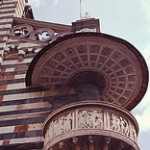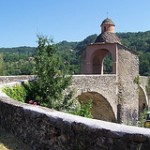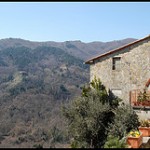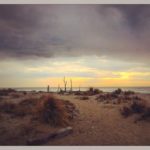City of Prato
 A few kilometres from Florence is Prato, an exceptionally industrious city where history, art and economy blend harmoniously. Built on a Longobard settlement it extended and developed in the Middle Ages around the Pieve and Castello. Today, the historical centre with its characteristic “case-torri” (tower houses) is still enclosed by the 14th century walls. The city of Prato is very important for the production and commerce of textiles and was the birthplace of Francesco Marco Datini, a merchant banker, father of “lettera di cambio”
A few kilometres from Florence is Prato, an exceptionally industrious city where history, art and economy blend harmoniously. Built on a Longobard settlement it extended and developed in the Middle Ages around the Pieve and Castello. Today, the historical centre with its characteristic “case-torri” (tower houses) is still enclosed by the 14th century walls. The city of Prato is very important for the production and commerce of textiles and was the birthplace of Francesco Marco Datini, a merchant banker, father of “lettera di cambio”
Unfortunately with the loss of independence in 1351 both the economy and industry suffered a decline which lasted until the 18th century, and it was not until the end of the century that the textile industry picked up and with this new wealth the city building estates were partially restored.
Prato saw an unrivalled growth in the 20th century and in 1992 became a provincial capital.
Meeting with guide and visit to:
-Castello dell’Imperatore, it is the only example of Swabian architecture in north- central Italy. It was built in 1240 as the Tuscan see of the Vicar of Federico II (admission fee)
-Cassero Medievale, an elevated path on which you can still walk today, joined the castle to the city walls (admission fee)
-Basilica Santa Maria delle Carceri, very interesting Renaissance temple laid out in the shape of a Greek cross, ordered by Lorenzo Il Magnifico and designed by Giuliano da Sangallo. Glazed earthenware by Andrea del Robbia decorate the inside
-Cathedral Santo Stefano, this Romanesque- Gothic cathedral is famous for the outer pulpit by Donatello and Michelozzo. It also houses frescoes by Agnolo Gaddi, Paolo Uccelli and Filippo Lippi. The “Cappella della Sacra Cintola” (The chapel of the sacred belt) deserves mention as it houses the precious Marian relics
-Piazza del Comune, a fine square where you can admire fine Medieval buildings : the Town Hall and the Palazzo Pretorio
-Palazzo Datini, this fine building is a rare example of a late 14th century residence which is frescoed on the outside. It was built for the merchant Francesco Dantini, native of Prato




